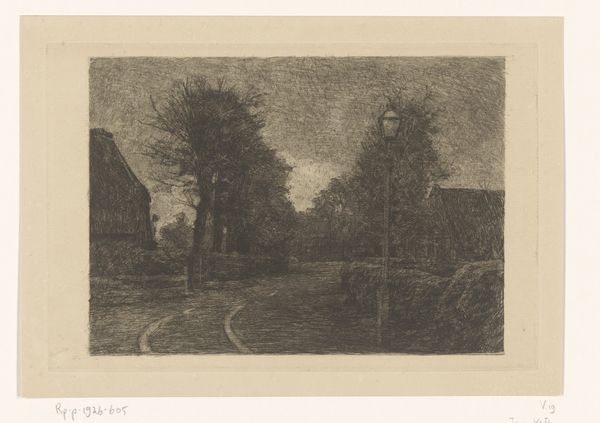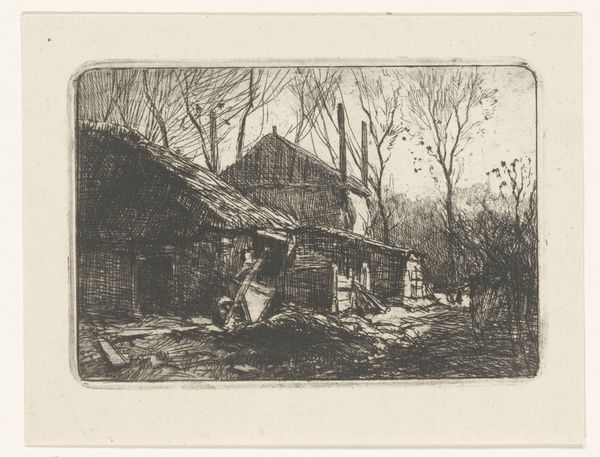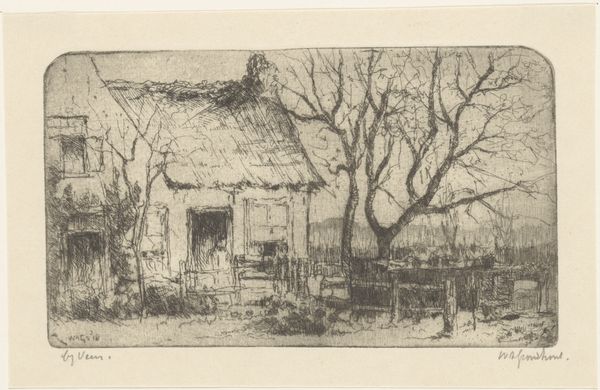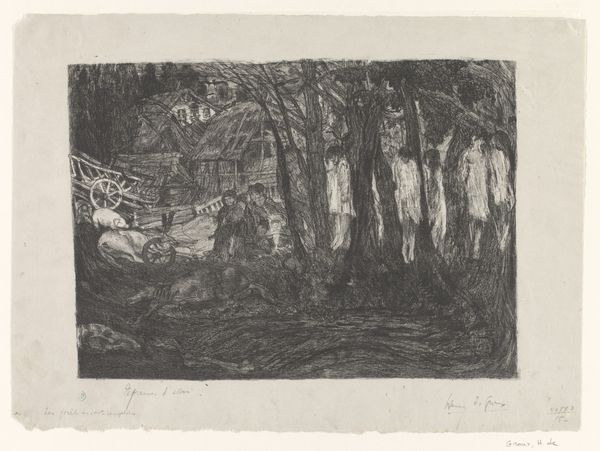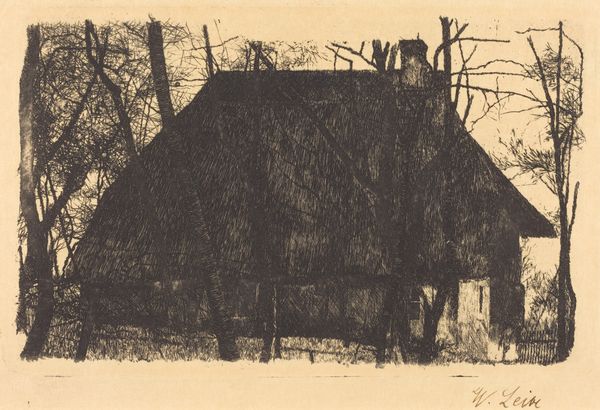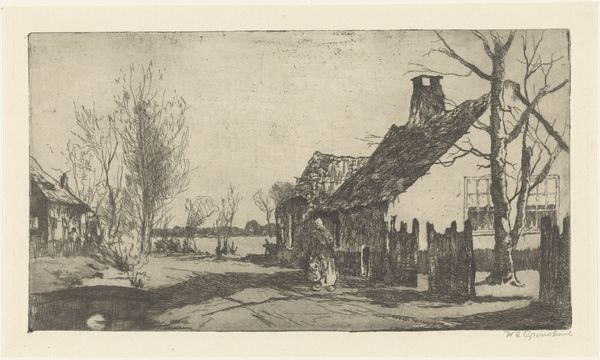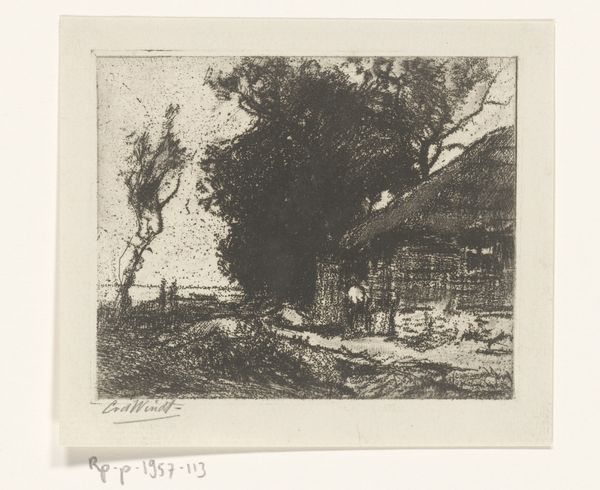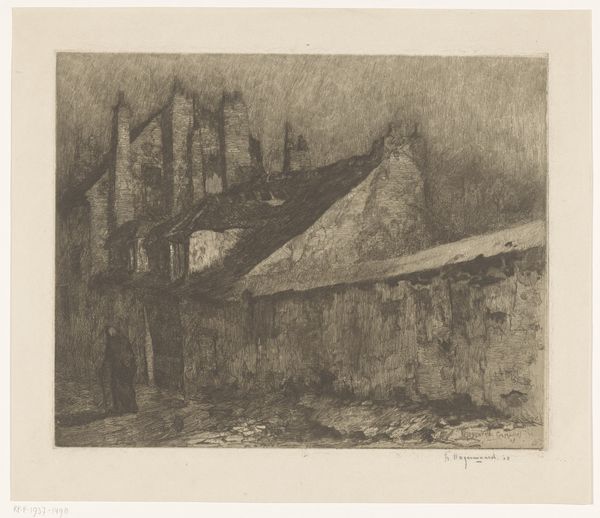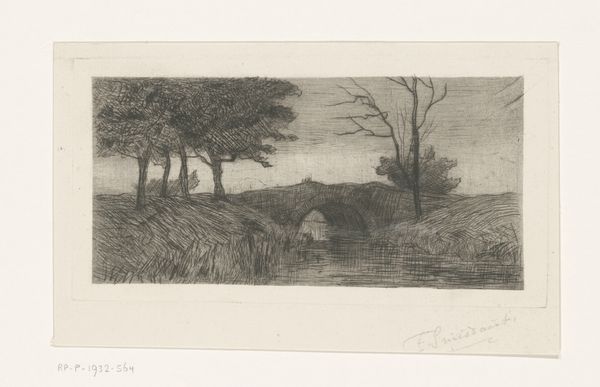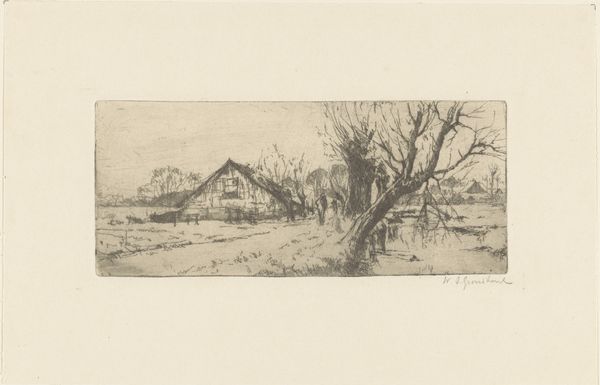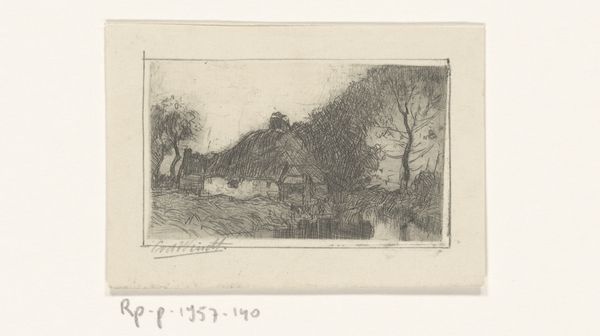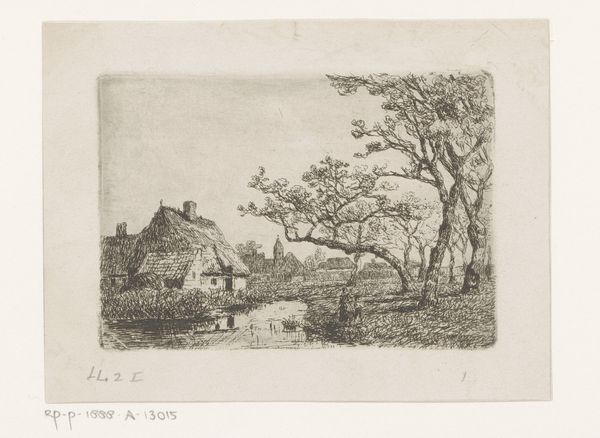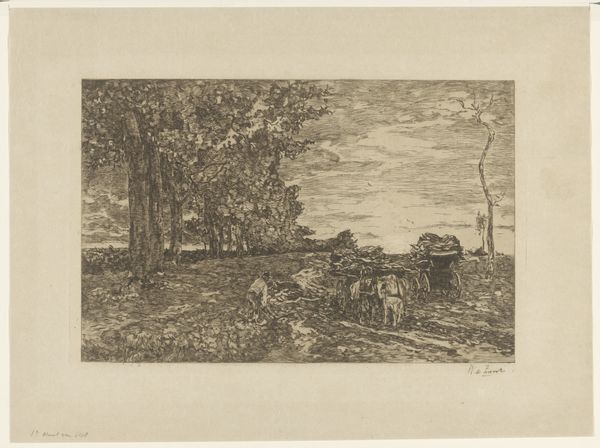
print, etching, engraving
# print
#
etching
#
old engraving style
#
landscape
#
etching
#
linocut print
#
cityscape
#
engraving
Dimensions: height 140 mm, width 200 mm
Copyright: Rijks Museum: Open Domain
Editor: Here we have Etha Fles’ etching, “Wallen van Rothenburg,” created sometime between 1867 and 1910. It's a very evocative cityscape. The bare trees and huddled buildings create a feeling of quiet solitude. What stands out to you in this work? Curator: The power of this etching resides in its evocation of memory. Look at the layering of lines, the way the artist captures the skeletal trees against the rooftops. It suggests a connection to deep-seated cultural anxieties. Consider the spire-like roofs, repeated almost obsessively, as if to ward off unseen forces, echoing anxieties present in Northern European folklore. What is your interpretation of their symbolism? Editor: I guess they could be representative of a certain kind of spiritual yearning or even a fear of the unknown. The repetition is quite striking. Curator: Exactly. The city, then, becomes not just a place, but a container of shared anxieties, a palimpsest of cultural experience etched in visual form. The artist makes the feeling of vulnerability almost palpable, doesn’t she? Do you feel the landscape participates in the anxieties held in place by the looming spires? Editor: Yes, I can see that. The starkness of the trees, devoid of leaves, definitely contributes to that sense of vulnerability. Curator: The symbols and landscape weave together, inviting the viewer to contemplate the weight of history and shared human emotions. What will you remember most about it? Editor: I think I'll remember the power of symbols to evoke not just visual imagery, but deeply ingrained cultural feelings. Curator: I'll remember how Fles uses etching to not just depict a place, but to embody a feeling. Thank you for sharing your thoughts.
Comments
No comments
Be the first to comment and join the conversation on the ultimate creative platform.
